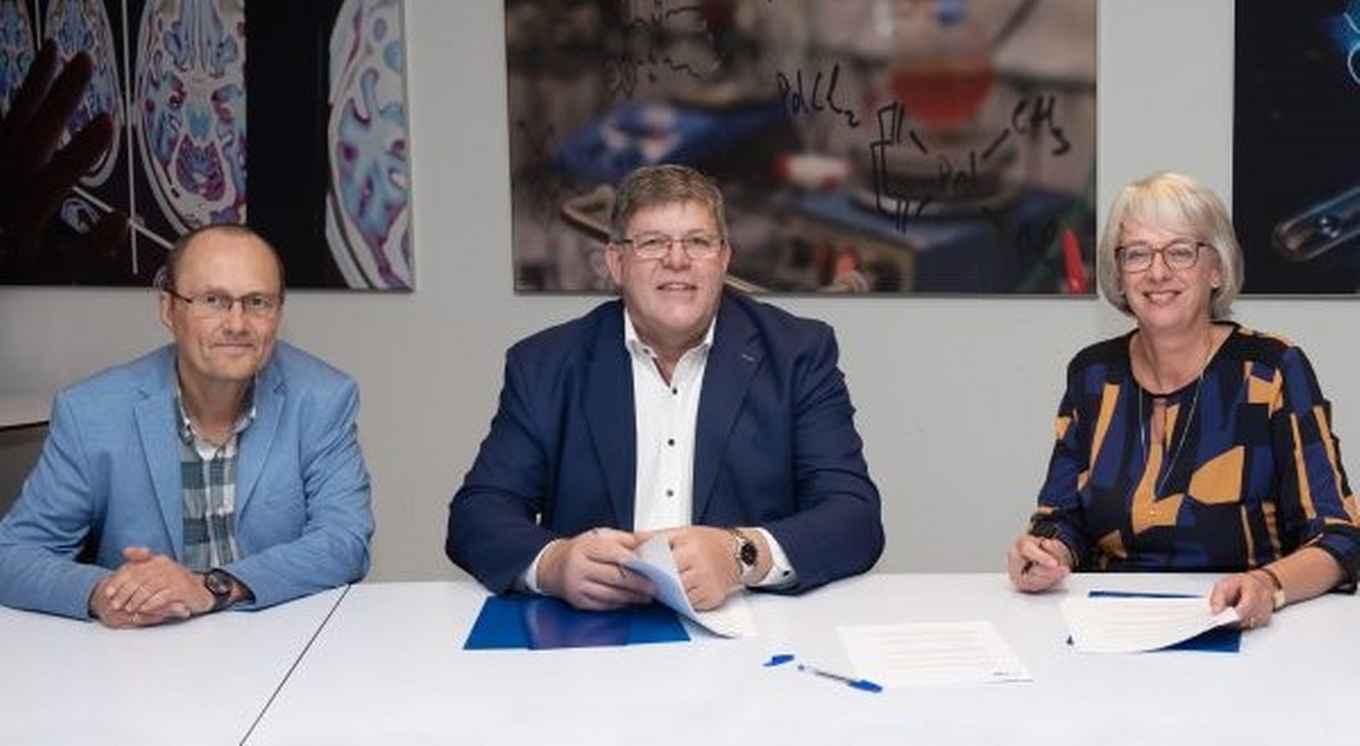IBED researchers will start measuring nitrogen deposition for Mesdag Dairy Fund
11 November 2019

On 8 November 2019 the agreement between the Mesdag Zuivelfonds and the UvA was signed.
Aim and methods
Researchers Dr. Albert Tietema, Dr. Emiel van Loon and Prof. Roland Bol, of the Institute for Biodiversity and Ecosystem Dynamics (IBED) of the UvA, will initially focus on measuring the distribution of deposition around two dairy farms. Both companies are located near natural areas (heath or forest). The research is aimed at determining the distribution pattern of the nitrogen deposition around the source. How far does the influence of the company extend? Is it a matter of kilometers and are sensitive natural areas affected? Or is it a few hundred meters, which means that most of the nitrogen ends up on the farm yard?
The research will work with various measurement methods, including bio-monitors. These are pots with plants on a soil where nitrogen is the limiting factor for growth. Those plants will respond to the amount of nitrogen deposition: they will grow faster if the nitrogen concentration will increase. In addition, the researchers make use of the fact that there are two different forms (isotopes) of nitrogen and that each source (agriculture or traffic) has a different ratio of these two forms. If one source dominates the deposition, the plants in the bio-monitor will also assume the ratio of nitrogen from this source, because the nitrogen comes from this source. These are small differences, but easy to measure.
The research will start in January 2020 and will take 3 years. There will be substantive contact with RIVM, the Dutch National Institute for Public Health and the Environment.
Urgency and invitation
The research must make clear under what circumstances nitrogen will deposit in nature. The expectation is that this research will contribute to the development of a better substantiated nitrogen policy. Because of the urgency of the nitrogen issue, Mesdag Zuivelfonds has asked the UvA to start the measurement investigation as soon as possible. Mesdag Zuivelfonds explicitly invites farmers' organizations, governments and the business community to participate in this research [1]. Interested organizations can contact the fund.
[1] The parties have no influence on the scientific approach. This is guaranteed by the UvA.